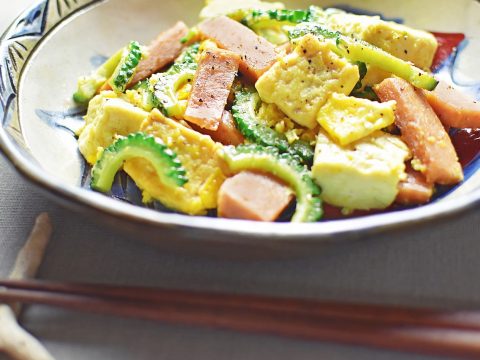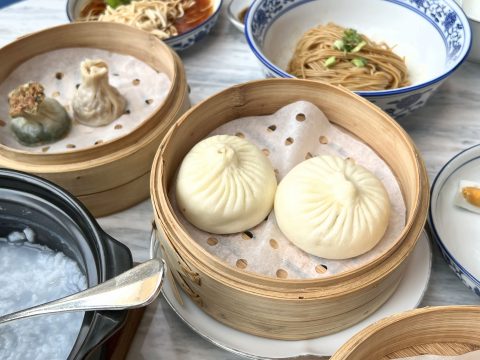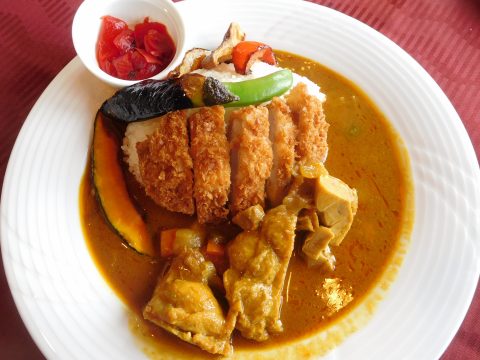Umami(うま味)
JAPANESE FOODS
04.07.2023

Have you ever tried Japanese ramen and noticed that it tastes a little different from anything else? But when asked exactly what it is, you are unable to put your finger on it. It’s distinctly savoury, but not exactly salty. Rich but also refreshing. Not any taste in particular, but simply… delicious.
This unique taste can likely be summed up by the Japanese word “umami.”
Although there is no direct translation of umami into English, it is often translated as a “pleasant savoury taste” or even just “deliciousness.”
But what is umami, and where did it come from?
What is “umami” (うま味)?
Umami is a unique flavour, differing from the other four basic tastes humans are said to have: sweet, sour, salty, and bitter.
The distinct taste was first identified and described by a Japanese professor at Tokyo Imperial University, Kikunae Ikeda, in 1908. Ikeda became interested in the unique flavour present in the broth used in ramen and discovered the taste was coming from a combination of the seaweed and bonito flakes used in the soup. Ikeda researched the compound that created this savoury taste, and named it “umami.” He proposed that it was the fifth basic taste.
What kinds of foods are high in umami?
Foods that are known to represent a strong umami taste are meats, fish, and vegetables, notably: chicken, pork, beef, bonito fish, shellfish, tomatoes, broccoli, mushrooms, and cheese. Japanese ingredients commonly included for the purpose of adding umami are bonito flakes and dashi.

Many foods today also contain the flavour enhancer MSG, or monosodium glutamate, which is glutamate extracted from seaweed and converted into a stable, crystalline form. This process was patented in partnership between Ikeda (mentioned above!) and a businessman named Saburosuke Suzuki, commercialised under the name “Ajinomoto” (味の素), which can be translated to “essence of taste.” MSG can be found most commonly in Asian supermarkets today under this name.

The addition of umami flavours to simpler foods can make them an altogether much more enjoyable experience to eat. A lack of umami can leave a dish feeling bland, but it’s important to keep the flavour well balanced with tastes like sweetness or acidity.
Next time you try some savoury Japanese food, try and be aware of the umami tastes, or even try and add a little umami to your own cooking.

Ella Clayton
Ella Clayton is a food writer, traveler, and all-around Japan enthusiast. Studying in Japan for her bachelor’s degree, she has ventured from Kansai and Kanto, and can say definitely: Osaka style Okonomiyaki is the best.
Read previous articles by the writer
Read latest articles
KEYWORDS
- # PICKPICK
- # Resume
- # alcohol
- # Rice
- # Soup
- # winter food
- # Fast Food
- # seafood
- # spicy foods
- # raw food
- # fermented food
- # Transportation
- # MEAT
- # Edo culture
- # suits
- # clothing
- # drink
- # fish
- # seasoning
- # Japanese New Years Foods
- # Toshikoshi soba
- # Osechi Ryori
- # Ozoni
- # Christmas
- # Japanese fusion pasta
- # Wafu Pasta
- # Japanese Hot Pot
- # なべ
- # 鍋
- # Miyazaki
- # Chicken Nanban
- # Karamen
- # Autumn Wagashi
- # Mushi-yokan
- # Imo-yokan
- # Japanese Autumn Fruits
- # Autumn
- # Vending Machine
- # fall
- # dango
- # Chestnut rice
- # saury
- # Mushroom
- # Rice vinegar
- # Japanese condiments
- # 調味料
- # Sake
- # Mirin
- # Soy sauce
- # Japanese Noodles
- # Udon
- # Ramen
- # Yakisoba
- # Soba
- # Japanese Seaweed
- # 海藻
- # かいそう
- # Payslip
- # Training
- # Japanese summer foods
- # 和菓子
- # Wagashi
- # ryokucha
- # 夏
- # 飲み物
- # Ramune
- # ラムネ
- # Pokari Sweat
- # ポカリスエット
- # Calpis
- # カルピス
- # Mugicha
- # ume
- # 梅
- # うめ
- # umeshu
- # job hunting
- # tofu
- # Recruitment in Japan
- # miso
- # Japanese cuisine
- # Yellowtail and bonito
- # Children’s Day
- # Kashiwa Mochi
- # Chimaki
- # fruits
- # Kusamochi
- # Types of Agriculture in Japan
- # bread
- # パン
- # パン屋さん
- # japanese bread
- # shokupan
- # meal blead
- # anko bread
- # 桜
- # さくら
- # cherry blossom
- # visa
- # hanami
- # omotenashi
- # sakura
- # おもてなし
- # Japanese hospitality
- # oshibori
- # wet hand towel
- # hand towel
- # restaurant
- # Commuting in Japan
- # Women-only cars
- # Exit gate
- # japanese train
- # train
- # valentine
- # Japanese sweets
- # 朝食
- # Japanese Breakfast
- # Breakfast
- # Japanese
- # 日本
- # healthy
- # persimmons
- # hoshigaki
- # HR
- # work in Japan
- # jinji ido
- # corporate systems
- # Japanese work culture
- # bento
- # ekiben
- # shinkansen
- # omiyage
- # train station
- # Japanese culture
- # work culture
- # mentaiko
- # umeboshi
- # Japanese snacks
- # potato chips
- # Japanese potato chips
- # Japanese writing
- # seaweed
- # konbu
- # ocean foods
- # shio konbu
- # dashi
- # miso soup
- # food processing
- # pear
- # nashi
- # sweet potato
- # japanese sweet potato
- # stingray
- # satsuma imo
- # food value chain
- # homecooking
- # agriculture
- # Japanese homecooking
- # farming
- # nikujaga
- # shojin ryori
- # meat and potatoes
- # traditional foods
- # comfort food
- # buddhist food
- # manufacturing
- # factory
- # eihire
- # vegetarian
- # food and beverage
- # izakaya
- # yatai
- # japanese festival
- # taiyaki
- # matsuri
- # summer
- # Ikayaki
- # smart agriculture
- # shaved ice
- # kakigori
- # かき氷
- # summer dessert
- # Japan
- # Japanese foods
- # dessert
- # fruit
- # matcha
- # icecream
- # Pikcup
- # Pikc up
- # Pcikup
- # skilled labor visa
- # working visa japan
- # Dineer Table in Japan
- # Japanese manner
- # Japanese food
- # Japanese Table Manner
- # Chopsticks
- # Japanese traffic signs
- # traffic information
- # road rules in Japan
- # chocolate
- # green tea
- # Osaka
- # Work Japan
- # Japanese company
- # ikura
- # sushi
- # nigiri
- # wasabi
- # PCIK
- # PICK UP
- # PICK
- # PICKUP








